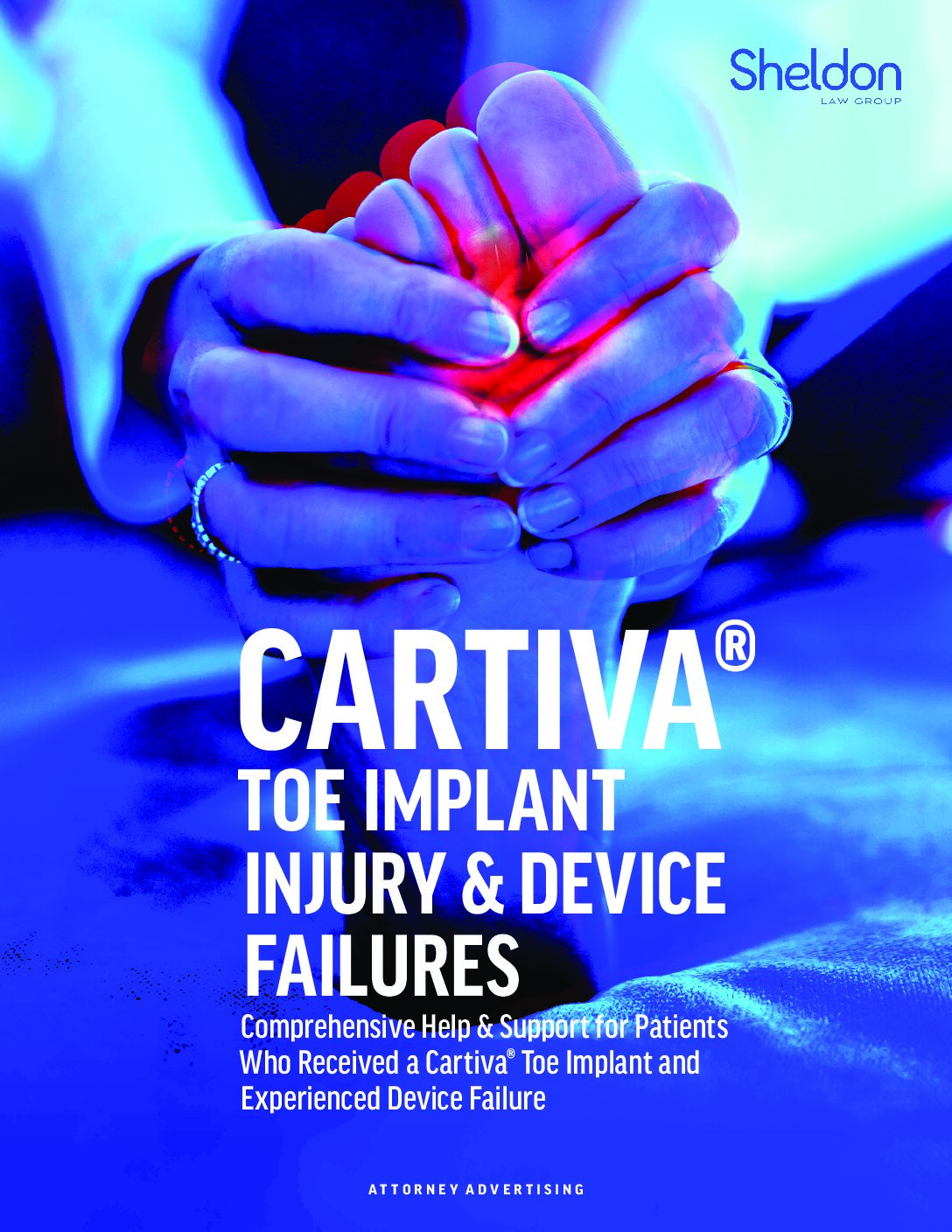Cartiva Toe Implant Research and Studies FAQs
If you are suffering from pain and stiffness in your big toe joint due to osteoarthritis or hallux rigidus, you may have heard of Cartiva, a synthetic cartilage implant that claims to offer a motion-preserving alternative to joint fusion. But what is Cartiva exactly, and how does it compare to other treatment options?
Get A 100% Free CASE EvaluationQ: What is Cartiva big toe implant and how does it work?
-
A: Cartiva is a synthetic cartilage implant designed to replace the damaged cartilage in the first metatarsophalangeal (MTP) joint, also known as the big toe joint. Cartilage is a smooth tissue that cushions the bones and allows them to glide smoothly. Cartiva is made of a hydrogel material that mimics the properties of natural cartilage. It is inserted into the bone through a small incision and secured with a press-fit technique. The implant aims to preserve the motion and function of the joint while reducing pain and stiffness caused by osteoarthritis or hallux rigidus (a form of arthritis that affects the big toe).
Q: What are the benefits and risks of Cartiva synthetic cartilage implant surgery?
-
A: According to a prospective, randomized, multi-centered clinical trial that compared Cartiva to MTP joint arthrodesis (fusion), Cartiva was found to be non-inferior to arthrodesis in terms of pain relief, function, and safety at two years follow-up. The study also reported that Cartiva patients had significantly greater improvement in range of motion and faster recovery than arthrodesis patients. The study enrolled 236 patients from 12 centers in Canada and the United Kingdom and used validated outcome measures such as the Visual Analog Scale (VAS) for pain, the Foot and Ankle Ability Measure (FAAM) for function, and the Likert scale for satisfaction.
However, Cartiva is not without risks or complications. Some of the potential adverse events associated with Cartiva include implant failure, implant loosening, implant displacement, implant fragmentation, bone loss, infection, inflammation, joint stiffness, joint instability, joint pain, nerve damage, wound healing problems, need for revision surgery, and reduced quality of life. Some of these events may occur early or late after the surgery and may require additional interventions or removal of the implant.
Q: How effective are Cartiva toe implants in the long term?
-
A: The long-term effectiveness of Cartiva is still uncertain, as there is limited data on its durability and performance beyond two years. Some studies have suggested that Cartiva may have a high failure rate over time, especially in patients with advanced stages of hallux rigidus or osteoarthritis. A study published by the American Orthopedic Foot and Ankle Society in November 2020 found that 64% of patients studied experienced device failure within four weeks of the surgery, and 79% at 19 months (about 1 and a half years) post-surgery. The study also found that 86% of participants who underwent revision surgery had bone loss around the implant site. The study concluded that Cartiva should be used with caution in patients with severe hallux rigidus or osteoarthritis.
Another study presented by Cartiva at the American Orthopaedic Foot & Ankle Society Annual Meeting in July 2018 reported that 91% of patients who received Cartiva maintained or improved their range of motion at five years follow-up, and 79% were satisfied or very satisfied with their outcome. However, this study had a high dropout rate (40%) and did not include a control group for comparison. Therefore, more rigorous, and longer-term studies are needed to confirm the safety and efficacy of Cartiva in different patient populations and settings.
Sources:
https://www.odtmag.com/contents/view_breaking-news/2018-07-18/cartiva-presents-clinical-data-on-treating-big-toe-arthritis-with-synthetic-cartilage-implant/
https://provider.healthybluenc.com/dam/medpolicies/healthybluenc/active/policies/mp_pw_c195275.html
https://luot.ch/wordpress/wp-content/uploads/2019/01/Baumhauer-Cartiva-FootAnkle-2016.pdf
https://www.aaos.org/aaosnow/2021/wednesday/research/research07/

